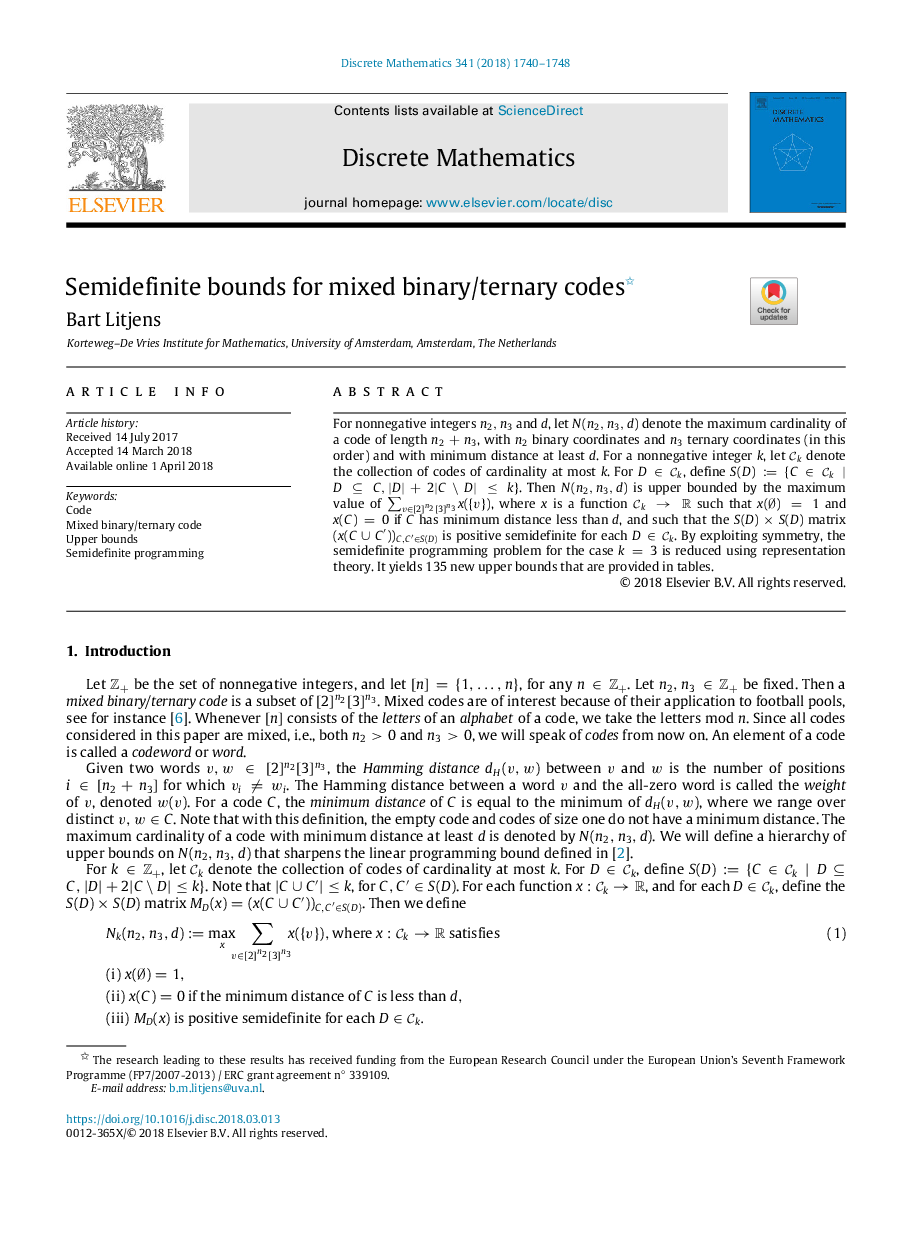| Article ID | Journal | Published Year | Pages | File Type |
|---|---|---|---|---|
| 8902992 | Discrete Mathematics | 2018 | 9 Pages |
Abstract
For nonnegative integers n2,n3 and d, let N(n2,n3,d) denote the maximum cardinality of a code of length n2+n3, with n2 binary coordinates and n3 ternary coordinates (in this order) and with minimum distance at least d. For a nonnegative integer k, let Ck denote the collection of codes of cardinality at most k. For DâCk, define S(D)â{CâCkâ£DâC,|D|+2|CâD|â¤k}. Then N(n2,n3,d) is upper bounded by the maximum value of âvâ[2]n2[3]n3x({v}), where x is a function CkâR such that x(â
)=1 and x(C)=0 if C has minimum distance less than d, and such that the S(D)ÃS(D) matrix (x(CâªCâ²))C,Câ²âS(D) is positive semidefinite for each DâCk. By exploiting symmetry, the semidefinite programming problem for the case k=3 is reduced using representation theory. It yields 135 new upper bounds that are provided in tables.
Related Topics
Physical Sciences and Engineering
Mathematics
Discrete Mathematics and Combinatorics
Authors
Bart Litjens,
